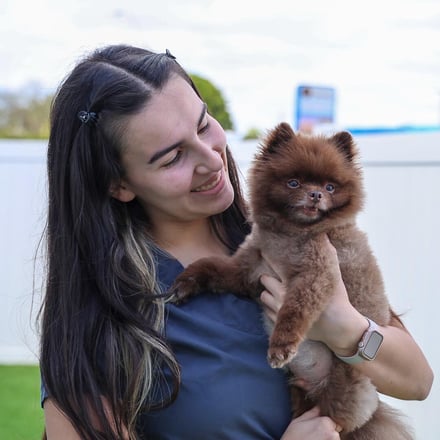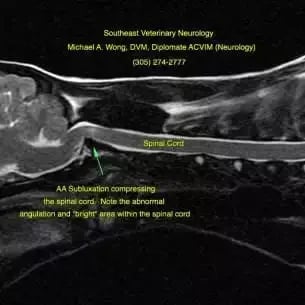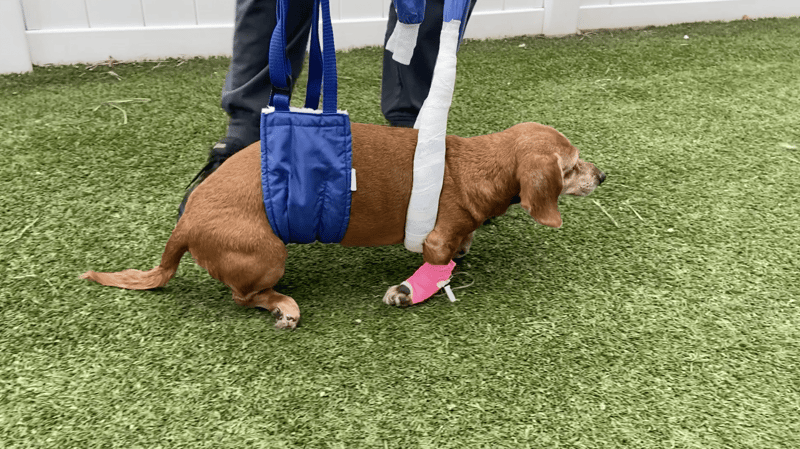Atlantoaxial (AA) Luxation in Dogs
Home » Conditions We Treat » Atlantoaxial Luxation
What is AA luxation?
Young toy breeds including Yorkshire Terriers, Toy Poodles, and Chihuahuas can make wonderful companions. However, they are also the breeds most commonly affected by atlantoaxial luxation. Atlantoaxial luxation in dogs (or AA luxation) is a spinal disorder where there is excessive movement between the first two bones in the neck. This is often the result of an abnormally-formed AA joint, where the atlas (C1) and axis (C2) bones do not fit together properly. At Southeast Veterinary Neurology (SEVN), our veterinary neurologists are fully equipped to diagnose and help develop the best treatment plan for your pet. Download the fact sheet.
Is your dog a toy breed suffering from possible neck pain or having trouble walking?
What are AA symptoms?
Instability in the AA joint can cause pressure on the spinal cord of the neck, resulting in neck pain and neurological symptoms. These can include:
- Holding the head low or tilted to the side
- Weakness or wobbliness in all four legs
- Inability to stand or move the legs
- Difficulty breathing

What causes atlantoaxial luxation?

The bones of the neck are usually held together with ligaments. In toy breeds, the bones and sometimes the ligaments are abnormally formed. Even gentle activities can result in damage to the ligaments, causing the bones to fall out of alignment (like a dislocated shoulder).

MRI of the neck demonstrating ‘kinking’ and compression of the spinal cord at C1-2.
How do we diagnose AA luxation?

MRI of the neck demonstrating ‘kinking’ and compression of the spinal cord at C1-2.
Our vet neurologists use imaging tools to properly diagnose AA luxation. X-ray may show misalignment between the bones, but by itself, it is not always enough to diagnose AA luxation. An MRI is needed to see any spinal cord compression, bruising, concurrent problems, and also for surgical planning. Sometimes, a CT scan may be performed after the MRI if surgery is planned.
What is the best treatment for AA luxation in dogs?
For the best chance of long-term success, we recommend surgery to stabilize the bones of the AA joint. In this procedure, we fuse the C1 bone to the C2 bone using bone cement and surgical screws. Surgery has a 90% success rate, while nonsurgical management involving crate rest and a body splint has roughly a 50% success rate. Additionally, in the latter case, recurrence of joint instability is about 40%. On the other hand, prognosis is typically very good for patients that are treated successfully with surgery.
